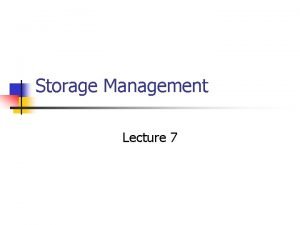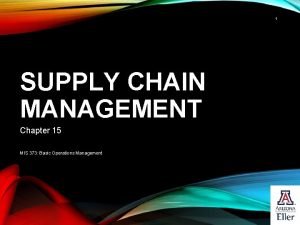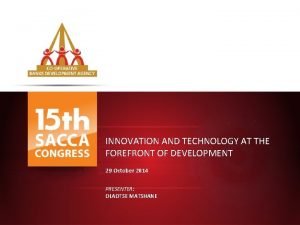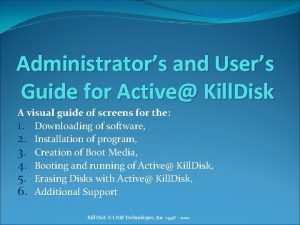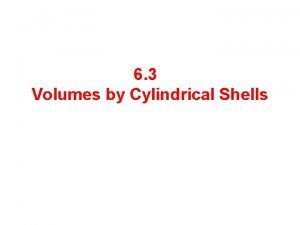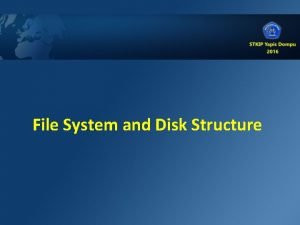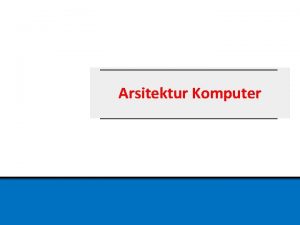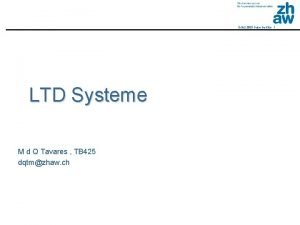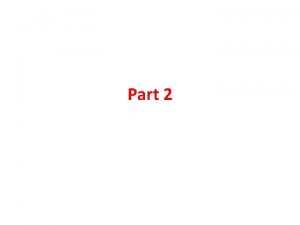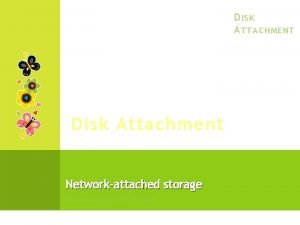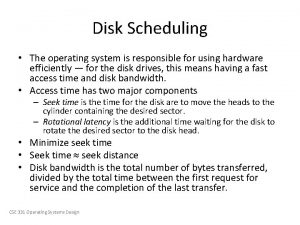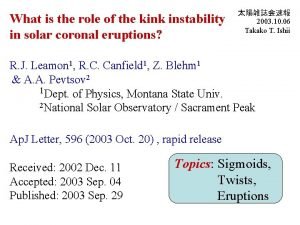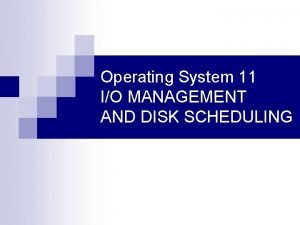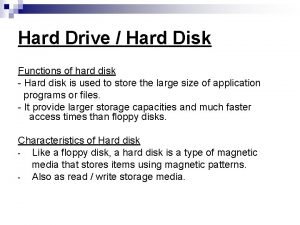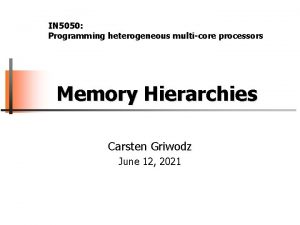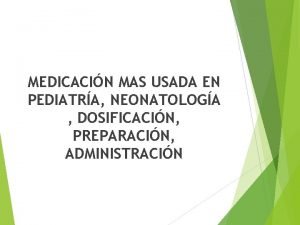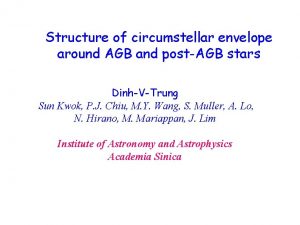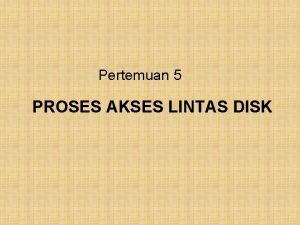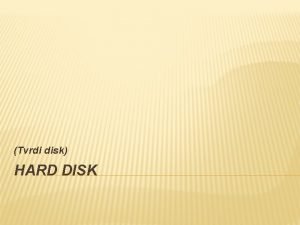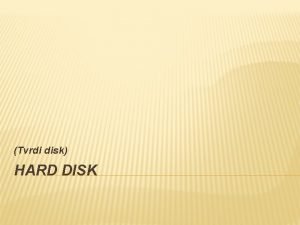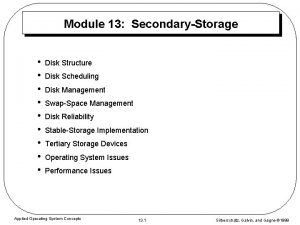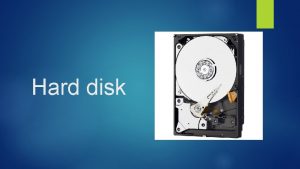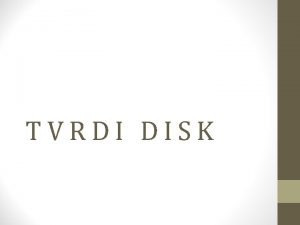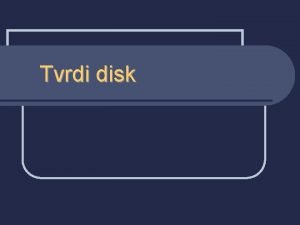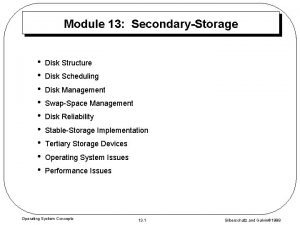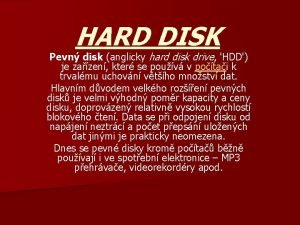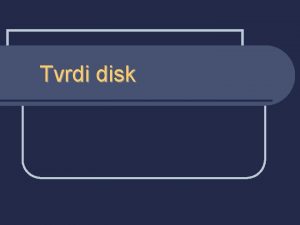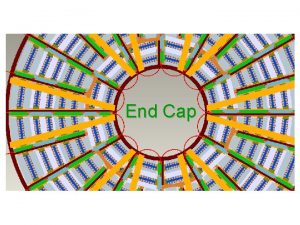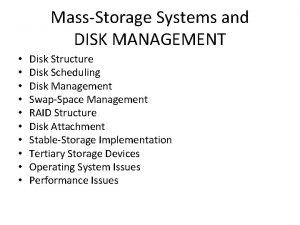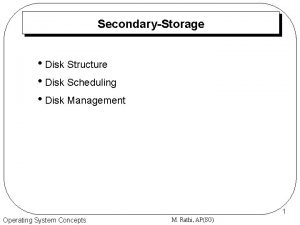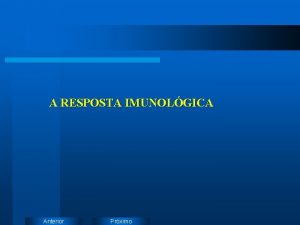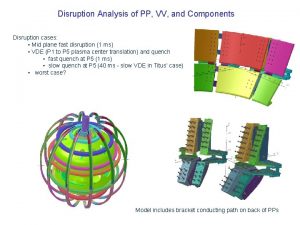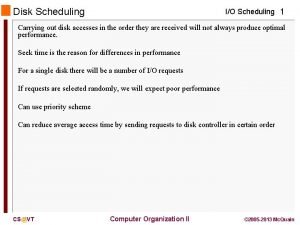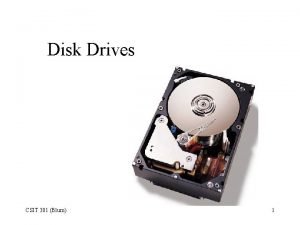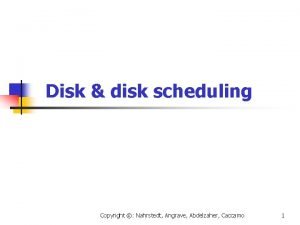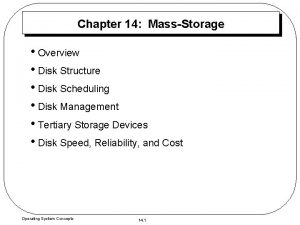Disk Disruption Anterior Diskectomy What is an Anterior




























- Slides: 28

Disk Disruption Anterior Diskectomy

What is an Anterior Diskectomy? z. Anterior diskectomy is a surgical procedure that is performed to decompress the nerve root. Partial removal of the lamina to allow access to the intervertebral disk.

Pathophysiology Chronic Low Back Pain z. Degenerative disk disease z. Lack of exercise z. Prior injury z. Structural and Postural abnormalities z. Systemic Disease z. Obesity

Degeneration of the disk z. Degeneration of the disk causes the intervertebral narrowing and a lessening of the effectiveness of the disks in ceasing as shock absorbers. z. The tough fibrous outer covering of the disk is more likely to develop tiny tears as part of the degeneration, predisposing the patient to a herniated nucleus pulposus.

MRI of herniated disk

Clinical Manifestations z. Back pain the most common complain. It is described as sharp or throbbing. z. Pain can be from mild to severe, radiating down your leg. z. Damage in the middle or lower part of the back: numbness, tingling or weakness in the buttocks, legs or feet.

Other Symptoms z. Pain can radiate when you cough, sneeze or strain. z. Prolonged sitting or standing can trigger pain or get worse. z. Depending on the nerve root involved, reflexes may be absent or depressed.

Diagnostic Studies z. MRI or CT, to localize the site of the herniation. z. X-Ray, to locate structural defects. z. Electromyogram (EMG) to look for signs of nerve damage caused by disk herniation.

Physical Assessment z Ambulation may be stiff, may have a limp. z Inspect for swelling triggered by muscle spsam and alignment of the vertebral. z Check for tenderness. z Check for sensation, patient may have paresthesia. z Loss of bladder or bowel control. z Neurological assessment.

Interventions/Non-Surgical Managment z. Proper alignment z. Exercise z. Anti-inflammatory analgesics z. Hot or Cold therapy z. Diet z. Alternative Therapy z. Percutaneous Laser Disk Decompression

Proper Alignment and Exercise z. Semi-Fowler’s position aka Williams position. z. Firm matress or back board. z. Isometric exercises most effective. z. Typical exercises for chronic low back pain. (Chart 43 -3, p. 928)

Drug Therapy z. Tylenol-may help control discomfort. z. NSAIDS-Aspirin, Advil, Motrin. z. Muscle relaxants-Flexeril. z. Opioid analgesics and nonsteroidal anaglesics. z. Epidural injection

Heat and Cold Therapy/Diet Therapy z. Moist heat for 20 -30 mins, 4 x. QD. z. Deep heat therapy. z. Ice therapy or ice packs 10 -15 mins q 12 hrs. z. Chronic pain can be lessened by controlling weight

Alternative Therapy and Percutaneous Laser Disk Decompression z. Imagery, magnetic field therapy, music. z. PLDD-local anesthetic and laser with a thin needle under fluoroscopy. Bed rest for 24 hours after procedure.

Surgery z. Diskectomy-removing portion of disk z. Laminectomy-removing one or more vertebral laminae and herniated nucleus. z. Alternative Surgeries: y. Percutaneous lumbar diskectomy y. Microdiskectomy y. Laparoscopic lumber diskectomy

Surgery Cont: z. The goal is to stop the herniated disk from pressing on and irritating the surrounding nerves. z. Anterior Diskectomy-incision made from the umbilicus to the mons pubis. z. Divided the subcutaneous tissue and behind the peritoneum and outside the peritoneal cavity.

Surgery Cont: z. Exposure of the anterior disk. z. Decortication of the vertebral end plates. z. The iliac vessel and the ureter were both protected to avoid iatrogenic injuries. z. Interbody lumbar fusion with synthes femoral ring allograft under fluroscopy. z. Estimated loss of blood.

Diskectomy

Nurse Management Care Postoperative z Assess for complications in the first 24 -48 hours. z Cerebrospinal fluid z Fluid volume deficit z Acute urinary retention z Paralytic ileus z Fat embolism z Persisitent nerve root pain z Infection

Continued Care z. Pain control-PCA (Morphine) z. Inspect surgical dressing. z. Maintain proper alignment. z. Logrolling z. Deep breathing z. SCDs or PCBs z. Have sufficient staff available to move pt.

Care Continued z Frequent monitoring of peripheral signs of extremities. z Assess sensation z Any new muscle weakness or paresthesis. z Assess for flatus, BS on all four Quads.

Health Teaching z Weight loss if needed with dietitian z Stop smoking z Use moist heat z Perform strengthening exercises z Proper body alignment by PT z Take meds as directed z Healing process may take up to 6 -12 mo. z Identify support systems

Preop Medications z. Dextrose 5% NACL 0. 45% 1000 ml, 60 ml/hr with Potassium Chloride 20 m. Eq. z. Cefazolin Sodium Injection/1 Gm IV Q 8 hrs IVPB (Mix D 5 W 50 ml infuse over 30 mins) z. Lovenox 30 MG=0. 3 ml SC QD at 0900. z. Tylenol 650=2 tabs PO Q 4 hrs, temp >38. z. Ketorolac Injection 30 MG=1 ml IV Q 6 PRN

Labs z WBC-11. 6 (5. 0 -10. 0) Increase r/t surgery, trauma, stress, inflammation. z RBC-2. 82 (4. 4 -5. 9) Decrease r/t surgery z Hgb-8. 7 (11 -16) Elvated could be affecting value as well as decrease in RBC. z Hct-25. 6 (37 -47) Same as Hgb. z Lymophocyte-14. 4 (24. 4%) Possible infection. z Potassium- 3. 4 (3. 5 -5) Trauma, surgery

Questions/ 1. A diskectomy surgical procedure is which of the following. z A. A surgical excision of part of the posterior arch of the vertebra to gain access to part or all of the protruding disk to be removed. z B. A surgical procedure using a tube that is passed through the retroperitoneal soft tissue to the lateral border of the disk. z C. A surgical procedure to decompress the nerve root. Involving the partial removal of the lamina to allow access to the intervertebral disk. z D. A mircrodiskectomy surgery through a 1 -inch incision, removing small fragments and decreased tissue trauma.

Question/The nurse assess a patient with a herniated disk except which of the following. z. A. Walking on heels or toes often causes severe pain on affected leg or back. z. B. Sharp low back pain radiating to thigh or calf. z. C. Severe pain when raising a straight leg. z. D. May lose handgrip strength.

References z Lewis, S. M. , and Heitkemper, M. M. , and Dirksen, S. R. , Medical Surgical Nursing Assessment and Management of Clinical Problems 5 th ed, St. Louis: Mosby, Inc. , 1996, pg 1808 -1810. z Ignatavicius, D. D. , and Workman, M. L. , Medical Surgical Nursing Critical Thinking for Collaborative Care 4 th ed, Philadelphia: W. B. Saunders Company.

Presentation by: z. Rebecca Valverde z. Instructor Francisco Felix z. Lecture Mon and Thur
 Types of storage management
Types of storage management From long disruption remained
From long disruption remained Mis supply chain management
Mis supply chain management 5 points of natural selection
5 points of natural selection Millennial disruption index
Millennial disruption index Pengertian digital disruption
Pengertian digital disruption Orointegratedcoop.com
Orointegratedcoop.com Big bang strategy
Big bang strategy Accelerated disruption
Accelerated disruption Active kill
Active kill Sechii disk
Sechii disk Disk vs shell method
Disk vs shell method The disk shown below in (1) clearly has
The disk shown below in (1) clearly has Disk file system adalah
Disk file system adalah Memori eksternal adalah
Memori eksternal adalah Floppy disk cleaner
Floppy disk cleaner Disk sys
Disk sys Interzonal region flame
Interzonal region flame Ttachment
Ttachment Magnetic disk uses
Magnetic disk uses Disk scheduling
Disk scheduling Deg kink
Deg kink The unit is capable of mimicking the processor
The unit is capable of mimicking the processor What is the main function of hard disk drive
What is the main function of hard disk drive Allone cloud disk drive 101 ramdisk
Allone cloud disk drive 101 ramdisk Hard disk track
Hard disk track Disk co
Disk co Jika diketahui disk memiliki 70 lintas
Jika diketahui disk memiliki 70 lintas Msinfo64
Msinfo64
